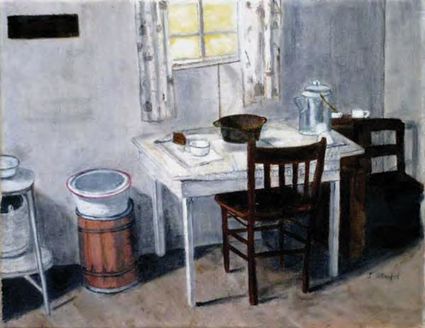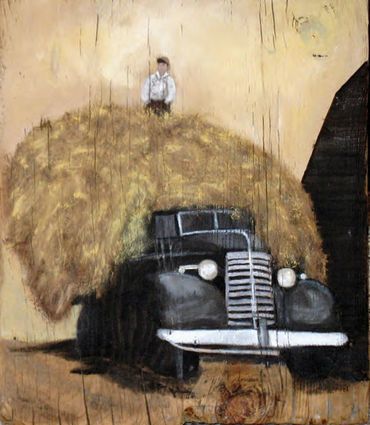Sidney and Parts East
More Migrating Norwegians – Rudie Ranch
May 27, 2020
In 1905 the first Rudie, named Eivind, followed a route similar to that we described recently for the Borgs: to Liverpool; to Hull, Canada; train to Sault Ste. Marie, Michigan; train to MonDak, Montana; ferry across the Missouri to Java; finally to Fairview. Our friends in his home country say the name certainly should be "Rudi," but in most references the family picked up an extra letter in this country, and who are we to deprive them of it?
For reasons unknown, just two years later, in 1907, Eivind had had enough of Montana, sold his farm to Nils Rudie, and returned to Norway. Nils should have also, for in 1913, while digging a water well, he struck a pocket of poison gas and died on the spot. This was also the year that a large shipment of additional Rudie's reached our state.
In our article about early Montana schools, we showed you an early Montana school bus, one horse power, because powered by exactly one horse. Rightmost in the file of students posing in front of it was little Sigurd Rudie as he appeared in Spring, 1913, just after he, his mother, Ragnhild, and his grandmother had arrived. Ragnhild purchased the deceased Nils' land and added a 40-acre homestead of her own. This latter proved a lucky draw, for in 1977 oil was found on it, and the last we knew it was still pumping.
The Rudie brothers imported their agricultural traditions from Norway, filed seven homestead claims at first, and added even more as other brothers followed in their tracks – Lars and Gunda Borg, we see, were not the only ones capable of building up our population.
In "Feeding Time," Sigurd, Jr., makes his appearance in our pages. On this occasion he was his father's helper in storing a load of hay in the barn – or at least pretending to help and playing on the hay truck.
When we visited, that shiny truck was highly prized and still in use, though not so shiny. It was a prosperous, well-kept farm raising wheat, malt barley, oats, angus cattle, and sheep. Further, it had been blessed with a deposit of oil.
Sigurd, Jr. was born in 1936 and is the owner we met. He recalled how, after school, the boys hooked a team of horses to a wagon and each night picked up a load of corn to store in a crib. Ears were tossed on the ground to feed the pigs.
The farm celebrated its centennial in 2006 and "Yesterday's Treasures" is a painting of the Rudies' original, homestead living quarters. Prior to 1906, they lived in a dugout. The building was moved to its present site more than a century ago and has been kept in an admirable state of preservation.
When we lived in Norway, we met a fellow that claimed his family had lived in the same farmhouse for 13 generations, and many people dwelled in wood houses built in the 1700s. Unlike America, they seemed to be more in favor of maintaining and using than in tearing down and building a new one. A prime example is Roundup's new grade school, with the historically important building's just sitting empty and flirting with destruction.
The homestead house was such a diminutive structure that, when we looked inside, it appeared too small for anyone ever to have occupied it, but our series has presented many examples of the tiny quarters homesteaders had to tolerate at first. Others were required to tolerate them for much longer than temporarily.
After the Rudies constructed larger, finer homes, this miniature was given a concrete floor and used to store grain. Today, siding and a metal roof make it appear modern outside, but inside rest all the ancient gems no longer in use but too laden with memories to make disposal possible. Gathering dust, dirt, and here and there a mouse's calling card or two, they sit awaiting the family to need them once again. Stranger things have happened.
For centuries people hungry for a better life have risked everything to emigrate to the United States. Through the system of lawful immigration begun by our founding fathers, they can pursue their goals. In Article I, Section 8, the U. S. Constitution grants Congress the responsibility "to establish an uniform Rule of Naturalization," determining how immigrants can become citizens but does not address immigration itself. Some, like Eivind, discover there is no place like home and return to their native counties. Our own ancestors risked all to arrive here from Germany, Austria, Poland, Yugoslavia, and Scotland. They, like these Norwegians, were always proud of their heritage, did not try to turn their new country into their old one, but became assimilated into the new land. That is why our nation is designated "The Melting Pot of the World."







Reader Comments(0)